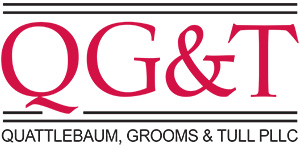COVID-19 And Federal Antidiscrimination Laws
August 2020 by Sarah Keith-Bolden |
As COVID-19 spreads, banks and other employers are faced with decisions about how to respond when an employee has symptoms of, tests positive for, or is exposed to the disease. These decisions implicate the Americans with Disabilities Act (“ADA”), which applies to most employers with at least 15 employees and prohibits employers from excluding employees from the workplace due to a disability unless they pose a direct threat to their own health or safety or the health and safety of others in the workplace.[1] The Equal Employment Opportunity Commission (“EEOC”) has not decided whether having COVID-19 can constitute a disability under the ADA, but it has determined that, in the current environment, a person with COVID-19 poses a direct threat to health and can be excluded from the workplace.[2] It has also pronounced that the ADA and other federal antidiscrimination laws it enforces “do not interfere with or prevent employers from following the guidelines and suggestions made by the CDC or state/local public health authorities about steps employers should take regarding COVID-19.”[3]
Employers should monitor and follow public health guidelines.
Public health officials are learning more about COVID-19 over time, and both the symptoms associated with the disease and the length of time the CDC believes infected people remain contagious have evolved since the pandemic began. Both the CDC and the Arkansas Department of Health maintain COVID-19 websites that provide up-to-date public health guidelines and directives.[4] In keeping with the EEOC’s guidance, employers should consult these websites for information about who should be excluded from the workplace and for how long. The guidelines in place at the beginning of August provide that most people with mild or moderate symptoms can stop isolating 10 days after symptoms began if their symptoms have improved and they have been fever free for at least 24 hours without medication.[5] People who test positive but have no symptoms can stop isolating 10 days after their first positive test, while people who have been in close contact with someone with COVID-19 should isolate for 14 days, even if they have a negative test during that time.[6]
Employers must keep medical information confidential when informing other employees of potential exposure.
An employer who learns that an employee has COVID-19 or symptoms of COVID-19 must “make every effort to limit the number of people who get to know the name of the employee.”[7] A representative of the employer may interview the employee to identify other people in the workplace who may have been exposed and may inform those people of their potential exposure, but the name of the employee with COVID-19 should be kept confidential.[8]
Employers should familiarize themselves with the Families First Coronavirus Response Act.
Employers should also familiarize themselves with the Families First Coronavirus Response Act, which applies to employers with fewer than 500 employees.[9] Among other things, the Act requires employers to provide up to two weeks of paid sick leave to employees who are unable to work due to COVID-19 because they (1) are experiencing symptoms and seeking a medical diagnosis, (2) have been advised by a healthcare provider to self-quarantine, or (3) are subject to a Federal, State, or local quarantine or isolation order related to COVID-19.[10] The Department of Labor maintains several online resources that employers can consult to determine their obligations under the Act.[11]
Conclusion
Public health
guidelines regarding COVID-19 are rapidly evolving. By monitoring and implementing these guidelines,
employers can promote workplace safety without violating federal
antidiscrimination laws.
[1] 42 U.S.C. §§ 12111(2), 12111(5), 12112(a)-(b), 12113(a)-(b).
[2] U.S. Equal Employment Opportunity Commission, Transcript of March 27, 2020 Outreach Webinar at ¶ 33, https://www.eeoc.gov/transcript-march-27-2020-outreach-webinar [hereinafter March 27 Webinar].
[3] U.S. Equal Employment Opportunity Commission, What You Should Know About COVID-19 and the ADA, the Rehabilitation Act, and Other EEO Laws (updated June 17, 2020), https://www.eeoc.gov/wysk/what-you-should-know-about-covid-19-and-ada-rehabilitation-act-and-other-eeo-laws.
[4] Centers for Disease Control and Prevention, Coronavirus (COVID-19) (last visited Aug. 3, 2020), www.cdc.gov/coronavirus/2019-ncov; Arkansas Department of Health, COVID-19 (last visited Aug. 3, 2020), https://www.healthy.arkansas.gov/programs-services/topics/novel-coronavirus.
[5] Centers for Disease Control and Prevention, When You Can be Around Others After You Had or Likely Had COVID-19 (updated July 16, 2020), https://www.cdc.gov/coronavirus/2019-ncov/if-you-are-sick/end-home-isolation.html.
[6] Id.; Arkansas Department of Health, ALERT: Quarantine required after exposure to COVID-19 even with negative test (May 22, 2020), https://www.healthy.arkansas.gov/images/uploads/pdf/quarantine_covid_notice.pdf.
[7] March 27 Webinar, supra note 2, at ¶ 18.
[8] Id. at ¶ 19.
[9] U.S. Department of Labor, Families First Coronavirus Response Act: Employee Paid Leave Rights (last visited August 3, 2020), https://www.dol.gov/agencies/whd/pandemic/ffcra-employee-paid-leave.
[10] Id.
[11] U.S. Department of Labor, COVID-19 and the American Workplace (last visited August 3, 2020), https://www.dol.gov/agencies/whd/pandemic.
Sarah Keith-Bolden is a member at Quattlebaum, Grooms & Tull PLLC where her practice focuses on commercial litigation and appeals. Ms. Keith-Bolden can be reached at sbolden@QGTLAW.com or 501-379-1789.
